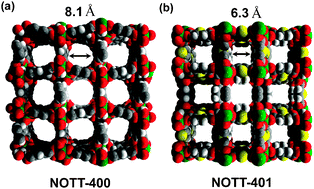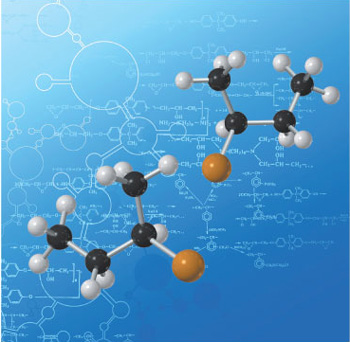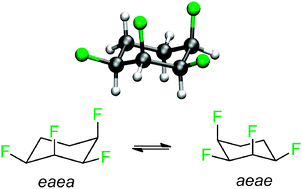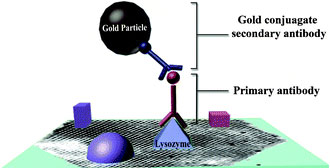Hydrogen is seen by many as the energy to fuel the future of the automotive industry. But its low polluting profile and high energy efficiency are currently overshadowed by the technical difficulties in developing safe and efficient storage strategies for mobile applications.
Alternatives to the common high pressure tanks have been looked for over the years and some promising results came from the use of metal hydrides, formic acid, carbon nanotubes, metal organic frameworks (MOFs) as storage supports.
MOF research for hydrogen storage is a young field, established in the early 2000s when reports of the application of these porous materials started to appear in journals such as Science (Science, 2003, 300 (5622), 1127-1129 DOI: 10.1126/science.1083440). After the first proofs of concept, research has moved on increasing the hydrogen absorption capabilities of these materials by screening different metals, organic linkers and fabrication techniques.
The group lead by Champness and Schröder at the University of Nottingham, not new to the field (Angew. Chem. Int. Ed. 2006, 45, 7358 –7364, DOI: 10.1002/anie.200601991; Nature Chemistry 1, 487 – 493 (2009), DOI:10.1038/nchem.333), has recently focused on the development of two new scandium(III)-based MOFs that exhibit promising hydrogen absorption qualities. The novel materials, based on the general formula [M2(μ2-OH)(OCR)4)], were characterised and their performance as storage supports tested.
 The novel MOFs, NOTT-400 and NOTT-401, share the same metal-based fragment as building block and differ from each other by the organic linker employed (H4BPTC and H2TDA). They retained high crystallinity up to 500 °C and 350 °C respectively and were successfully reacted with acetone and degassed to afford the fully desolvated material ready for use.
The novel MOFs, NOTT-400 and NOTT-401, share the same metal-based fragment as building block and differ from each other by the organic linker employed (H4BPTC and H2TDA). They retained high crystallinity up to 500 °C and 350 °C respectively and were successfully reacted with acetone and degassed to afford the fully desolvated material ready for use.
The hydrogen absorption capabilities were tested at 77 and 87 K at hydrogen pressures ranging up to 20 bar with a maximum absorption of 4.44 wt% at 20 bar for NOTT-401. The absorption kinetics showed a very fast intake, reaching equilibrium in about 3 minutes, and good reversibility. No hysteresis was observed.
For the original communication see:
Highly porous and robust scandium-based metal–organic frameworks for hydrogen storage
Ilich A. Ibarra, Sihai Yang, Xiang Lin, Alexander J. Blake, Pierre J. Rizkallah, Harriott Nowell, David R. Allan, Neil R. Champness, Peter Hubberstey and Martin Schröder
Chem. Commun., 2011, DOI: 10.1039/C1CC11168J
Posted on behalf of Dr. Giorgio De Faveri, Web Writer for Catalysis Science & Technology.

















 Scientists are a step closer to understanding how an important cell organelle works, which could lead to new insight into disease such as diabetes and Alzheimer’s disease.
Scientists are a step closer to understanding how an important cell organelle works, which could lead to new insight into disease such as diabetes and Alzheimer’s disease. The novel MOFs, NOTT-400 and NOTT-401, share the same metal-based fragment as building block and differ from each other by the organic linker employed (H4BPTC and H2TDA). They retained high crystallinity up to 500 °C and 350 °C respectively and were successfully reacted with acetone and degassed to afford the fully desolvated material ready for use.
The novel MOFs, NOTT-400 and NOTT-401, share the same metal-based fragment as building block and differ from each other by the organic linker employed (H4BPTC and H2TDA). They retained high crystallinity up to 500 °C and 350 °C respectively and were successfully reacted with acetone and degassed to afford the fully desolvated material ready for use.

